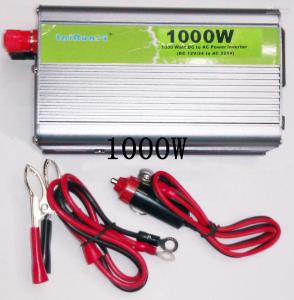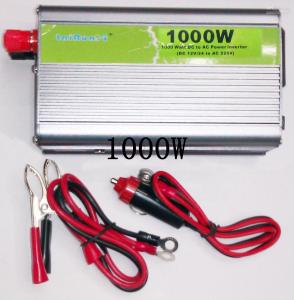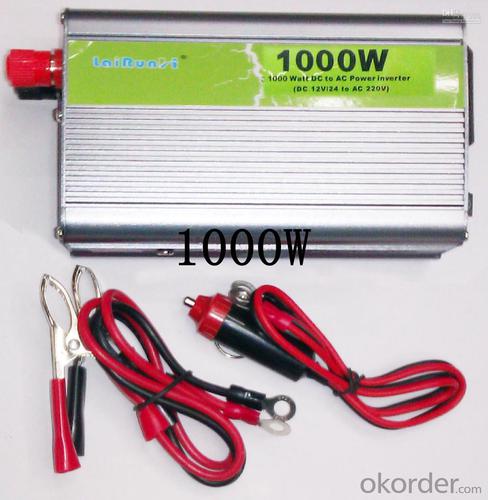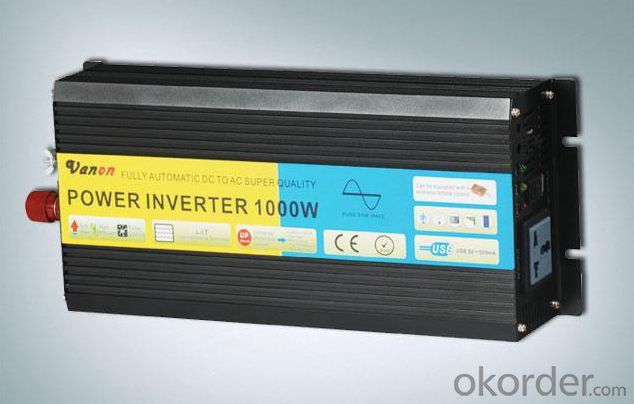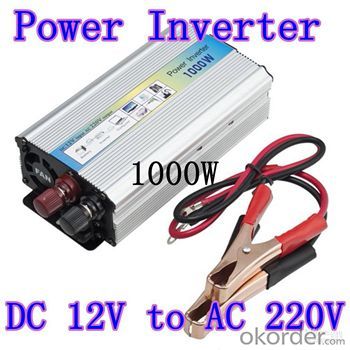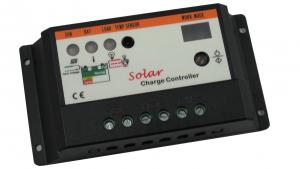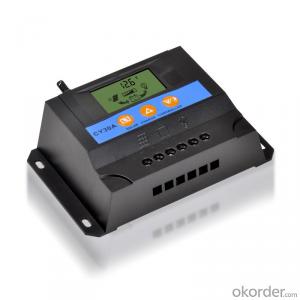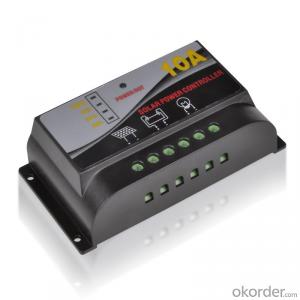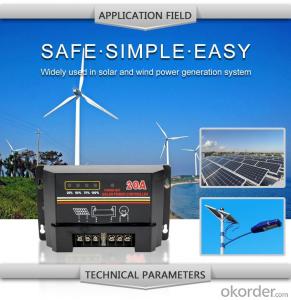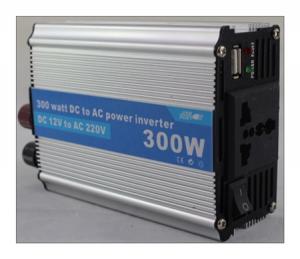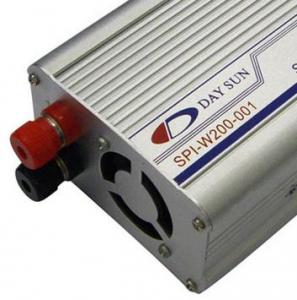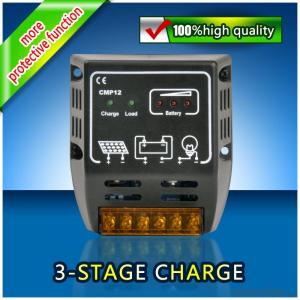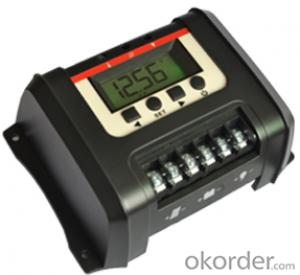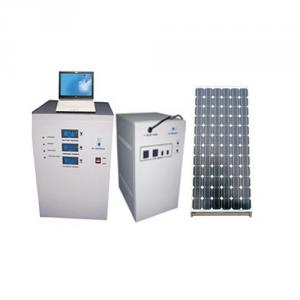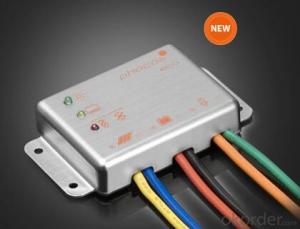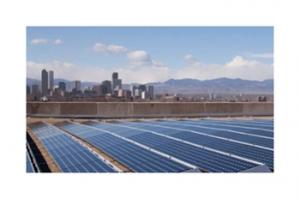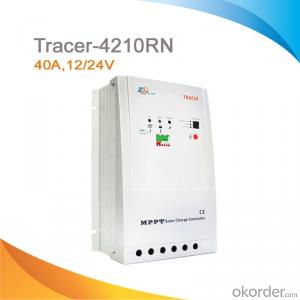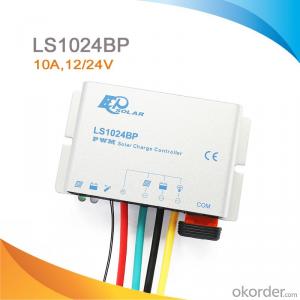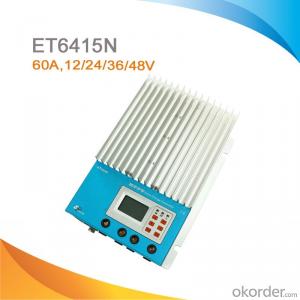Solar Controllers for High Quality 1000W Solar Charging Discharging Controller on eBay
- Loading Port:
- China main port
- Payment Terms:
- TT or LC
- Min Order Qty:
- 100 unit
- Supply Capability:
- 10000 unit/month
OKorder Service Pledge
OKorder Financial Service
You Might Also Like
1, Product desciption
Inverter circuits designed to produce a variable output voltage range are often used within motor speed controllers.
The DC power for the inverter section can be derived from a normal AC wall outlet or some other source. Control and feedback circuitry is used to adjust the final output of the inverter section which will ultimately determine the speed of the motor operating under its mechanical load.
Motor speed control needs are numerous and include things like: industrial motor driven equipment, electric vehicles, rail transport systems, and power tools. (See related: variable-frequency drive ) Switching states are developed for positive, negative and zero voltages as per the patterns given in the switching Table.
The generated gate pulses are given to each switch in accordance with the developed pattern and thus the output is obtained.
2, Features of the product
Inverters convert low frequency main AC power to higher frequency for use in induction heating.
To do this, AC power is first rectified to provide DC power. The inverter then changes the DC power to high frequency AC power. Due to the reduction in the number of DC Sources employed, the structure becomes more reliable and the output voltage has higher resolution due to an increase in the number of steps so that the reference sinusoidal voltage can be better achieved.
This configuration has recently become very popular in AC power supply and adjustable speed drive applications. This new inverter can avoid extra clamping diodes or voltage balancing capacitors. There are three kinds of level shifted modulation techniques, namely:
The first thing to figure out is the length of road in need of street lights.
This can be a small entrance road only a couple hundred of feet long to miles of streets through an area. Does the area currently have any type of lighting available.
What is the reason for needing street lights in this area
Is the electrical grid already nearby or would you need to call in the power company to bring in electrical lines.
If the electric needs to be brought to the area, how much is this going to cost? Depending on how far the grid electric is from the location of the needed lighting, this can be quite expensive.
How much lighting is needed on the street? Do the lights need to be dark sky compliant.
Do the street lights need to run from dusk to dawn or for only a specified number of hours at night.
Are the street lights able to dim in the middle of the night and still provide enough lighting.
These questions need to be answered before you can decide on how many lights you will need to complete the project.
3, Product Image
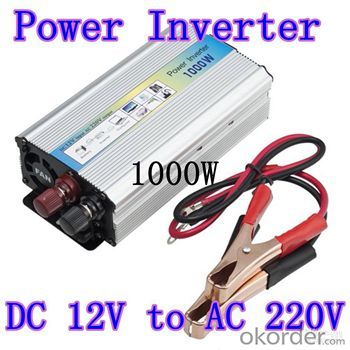
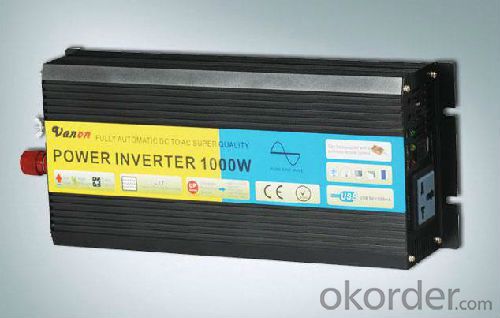
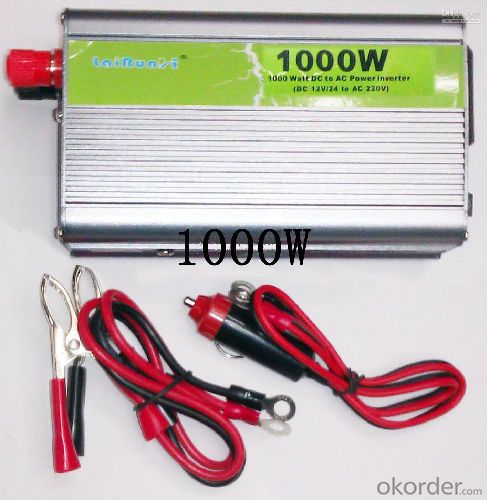
4, Detailed Specification
INPUT | |
Input voltage range | 185~265±5Vac |
OUTPUT | |
Output voltage range | 185~265±5Vac (AC mode) , 230Vac (DC mode) |
Output frequency (DC mode) | 50Hz (48~54Hz) or 60Hz(58~64Hz), same as AC(AC mode) 50Hz ±0.3Hz (DC mode) |
Wave form | Sine wave (DC Mode) |
Transfer time | 10ms. (Typical) |
BATTERY | |
Rated charging current (max.) | 45A |
Norminal DC input voltage | 12V |
Min. DC start voltage | 20V / 40V |
PHYSICAL | |
Unit dimension (mm) | 526*277*212 |
Master box dimension (mm) | 620*350*370 |
Net weight (1pc, kg) | 22.8 |
- Q: Can a solar controller be used with lithium-ion batteries?
- Yes, a solar controller can be used with lithium-ion batteries. However, it is important to ensure that the solar controller is compatible with lithium-ion battery chemistry and has the necessary features, such as voltage and current settings, to properly charge and protect the lithium-ion batteries.
- Q: Can a solar controller be used with solar-powered refrigerators?
- Yes, a solar controller can be used with solar-powered refrigerators. A solar controller regulates the voltage and current from solar panels to ensure efficient charging of batteries. In the case of solar-powered refrigerators, a solar controller helps manage the power supply and prevent overcharging or damage to the batteries, allowing for optimal functioning of the refrigerator.
- Q: How does a solar controller handle variations in solar panel cleaning frequency?
- A solar controller does not directly handle variations in solar panel cleaning frequency. Its main function is to regulate and optimize the charging and discharging of the battery in a solar power system. However, a well-maintained and clean solar panel will generally provide more efficient energy conversion, which can lead to improved battery charging. Therefore, it is recommended to clean solar panels regularly to maximize their performance and overall system efficiency.
- Q: Can a solar controller be used with solar panels that are connected to a micro-inverter?
- When solar panels are connected to a micro-inverter, it is possible to use a solar controller. The purpose of a solar controller is to regulate the charging of batteries in a solar power system. It manages the flow of electricity from the solar panels to the batteries, preventing overcharging and ensuring efficient charging. In a system where solar panels are connected to a micro-inverter, the micro-inverter converts the DC power generated by the solar panels into AC power. This AC power can be used by household appliances or sent back to the grid. The micro-inverter adjusts the output voltage and frequency of the AC power. Despite the presence of a micro-inverter, the solar controller can still be utilized to regulate battery charging. It monitors the current and voltage of the solar panels and adjusts the charging parameters accordingly. While the micro-inverter's role is limited to power conversion, the solar controller optimizes the charging process to ensure proper battery charging and protection. In summary, combining a solar controller and a micro-inverter enables efficient power conversion and optimal battery charging in a solar power system.
- Q: Can a solar controller be used for both solar panels and batteries?
- Both solar panels and batteries can benefit from the use of a solar controller. This crucial component, also known as a charge controller, plays a vital role in a solar power system. Its primary function is to regulate the flow of charge into the batteries, effectively preventing overcharging or undercharging. When the solar controller is connected to solar panels, it takes charge of managing the electricity flow from the panels to the batteries. It ensures that the batteries receive an optimal charge at the right voltage and current levels, maximizing their lifespan and performance. The controller closely monitors the battery voltage and adjusts the charging process accordingly. Moreover, the solar controller also serves as a safeguard against damage caused by excessive discharge. By setting a limit, it prevents the batteries from discharging beyond a certain level, thus safeguarding their integrity and ensuring they can provide power when needed. In summary, a solar controller is an indispensable component in a solar power system. It plays a crucial role in managing and optimizing the charging process for both solar panels and batteries.
- Q: What is the maximum charging efficiency for a solar controller?
- The maximum charging efficiency for a solar controller typically ranges from 95% to 98%.
- Q: How does a solar controller prevent overloading of batteries?
- A solar controller prevents overloading of batteries by regulating the amount of solar energy being sent to the batteries. It monitors the charge level of the batteries and adjusts the charging process accordingly, ensuring that the batteries are not overcharged or discharged excessively. The solar controller also incorporates various protective mechanisms such as voltage regulation and temperature compensation to prevent overloading and prolong the lifespan of the batteries.
- Q: Can a solar controller be used with solar-powered surveillance systems?
- Yes, a solar controller can be used with solar-powered surveillance systems. A solar controller, also known as a charge controller or solar regulator, is a crucial component of a solar power system. Its main function is to regulate the flow of electricity from the solar panels to the batteries, preventing overcharging and protecting the batteries from damage. In the case of solar-powered surveillance systems, solar controllers play a vital role in managing the power supply. They ensure that the solar panels generate enough electricity to power the surveillance equipment while also charging the batteries. This is particularly important as surveillance systems often require continuous power supply to operate 24/7. Solar controllers come in various types, such as PWM (Pulse Width Modulation) and MPPT (Maximum Power Point Tracking). Both types can effectively regulate the charging process and ensure maximum power output from the solar panels. Furthermore, solar controllers often have additional features such as battery temperature compensation and low-voltage disconnect, which enhance the overall performance and protection of the system. Therefore, integrating a solar controller into a solar-powered surveillance system is highly recommended. It not only optimizes the system's power efficiency but also safeguards the batteries, prolonging their lifespan and ensuring uninterrupted surveillance operation.
- Q: Can a solar controller be used with a solar-powered satellite dish?
- Yes, a solar controller can be used with a solar-powered satellite dish. The solar controller is responsible for regulating and optimizing the power output from the solar panels to ensure efficient charging and usage of the satellite dish's battery or power system. By using a solar controller, the satellite dish can effectively harness the energy from the sun and operate efficiently.
- Q: How does a solar controller handle battery over-temperature protection?
- A solar controller handles battery over-temperature protection by monitoring the temperature of the battery and taking necessary actions to prevent overheating. It typically uses temperature sensors to measure the battery temperature and can automatically adjust the charging parameters to reduce the charging current or temporarily suspend charging if the temperature exceeds a safe threshold. Additionally, some controllers may have additional features like temperature compensation to optimize charging performance based on the battery temperature.
Send your message to us
Solar Controllers for High Quality 1000W Solar Charging Discharging Controller on eBay
- Loading Port:
- China main port
- Payment Terms:
- TT or LC
- Min Order Qty:
- 100 unit
- Supply Capability:
- 10000 unit/month
OKorder Service Pledge
OKorder Financial Service
Similar products
Hot products
Hot Searches
Related keywords
